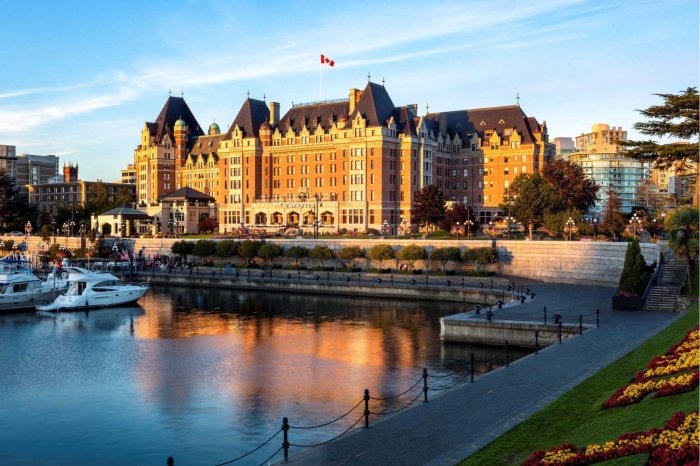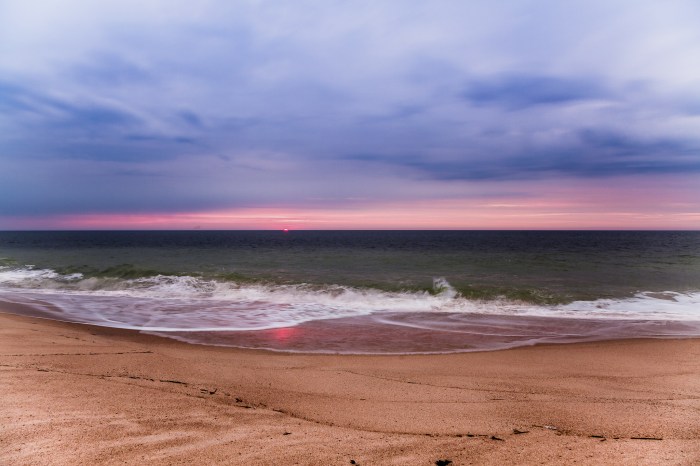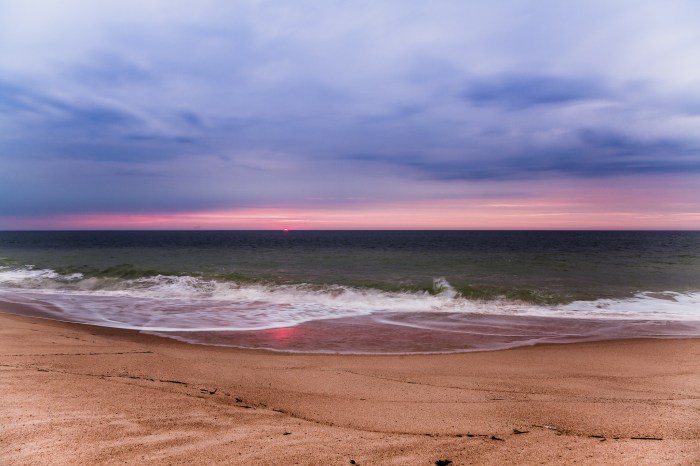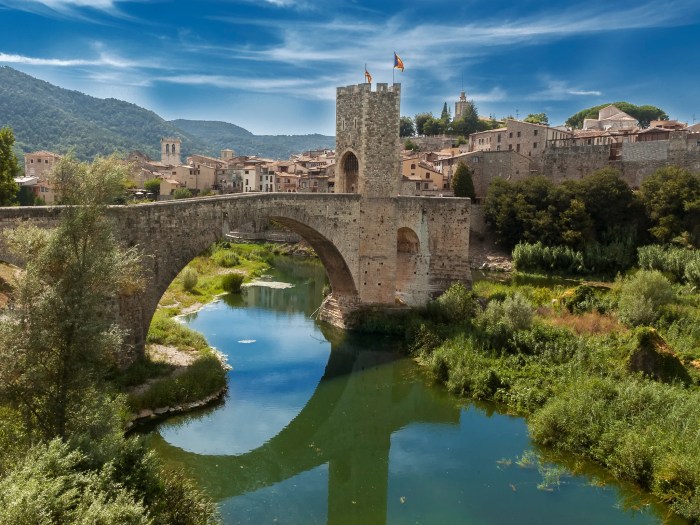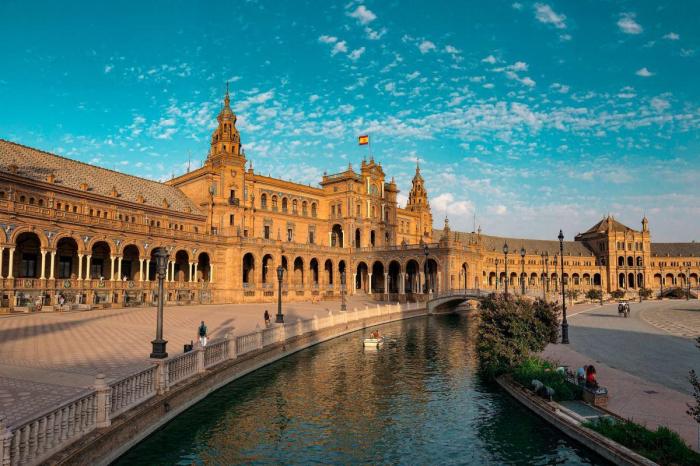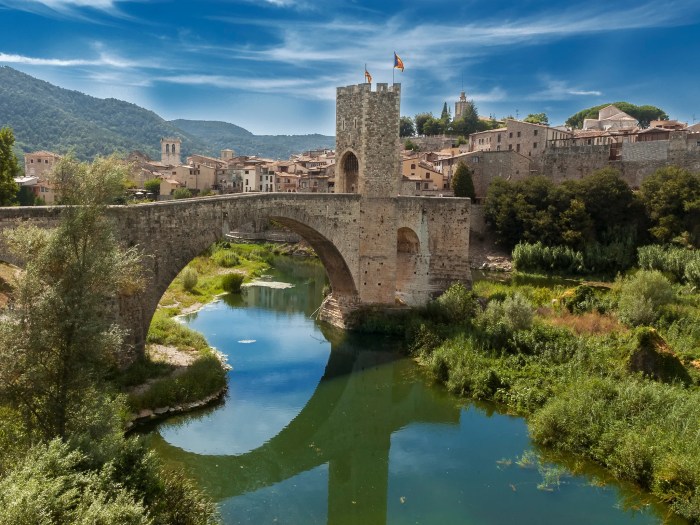Top things to do in Qatar: From dazzling modern marvels to ancient traditions, Qatar offers a unique blend of experiences for every traveler. This guide dives deep into the country’s captivating culture, iconic landmarks, and exciting activities, providing a roadmap for unforgettable adventures.
Qatar, a rapidly developing nation on the Arabian Peninsula, boasts stunning architecture, vibrant cultural festivals, and breathtaking natural landscapes. This detailed guide will explore the must-see attractions, from the iconic desert landscapes to the bustling souks, ensuring a rich and fulfilling journey for visitors of all interests.
Introduction to Qatar
Qatar, a captivating nation nestled on the Arabian Peninsula, boasts a rich tapestry of history and culture intertwined with rapid modern development. From ancient Bedouin traditions to futuristic skyscrapers, Qatar offers a unique blend of the past and the future. Its strategic location and burgeoning economy make it a fascinating destination for travelers and investors alike.This nation’s journey from a pearl-diving society to a global energy powerhouse and a prominent tourist destination is a testament to its resilience and vision.
Understanding Qatar’s past, present, and future is key to appreciating its allure.
Qatar’s Cultural Heritage
Qatar’s cultural identity is deeply rooted in its Bedouin past. Generations of nomadic tribes shaped the traditions, customs, and social structures of the region. The strong emphasis on family values, hospitality, and respect for elders remain prominent aspects of Qatari society. Traditional Qatari clothing, like the thobe for men and the abaya for women, still holds significance in daily life and special occasions.
The country’s rich heritage is celebrated through festivals, art, and music, reflecting a deep connection to its nomadic roots and the cultural exchanges that shaped its identity.
Qatar’s Economic Profile
Qatar’s economy is heavily reliant on natural gas and oil resources. These resources have fueled rapid economic growth and development over the past few decades, transforming the nation into a global economic player. The diversification of the economy is an ongoing initiative, with significant investment in sectors such as tourism, finance, and technology, aimed at creating sustainable growth.
This transition reflects a calculated approach to securing Qatar’s future beyond its reliance on fossil fuels.
Demographic Overview
Qatar’s demographics are largely shaped by its status as a major global energy hub. A significant portion of the population comprises expatriates, attracted by employment opportunities in various sectors. This influx of diverse cultures has contributed to the vibrant and cosmopolitan atmosphere of Qatari cities. The Qatari nationals, though smaller in number, hold a vital role in the country’s cultural identity and governance.
The proportion of expatriates to nationals reflects the unique demographic balance of this nation.
Geographical Location and Climate
Located on the Arabian Peninsula, Qatar occupies a strategically important position bordering the Persian Gulf. This geographical location influences the country’s climate, which is characterized by high temperatures and low humidity throughout most of the year. The arid climate is a defining factor in the nation’s architecture, infrastructure, and lifestyle. The unique geographical position also gives it significant regional influence.
Modern Development and Tourism Focus
Qatar’s modern development is remarkable, exemplified by the construction of world-class infrastructure, including stunning stadiums, hotels, and other public spaces. The nation’s commitment to hosting major international events, such as the FIFA World Cup 2022, has accelerated its modernization and showcased its capabilities. This has also propelled Qatar’s tourism sector, with the country actively promoting itself as a sophisticated and exciting travel destination.
The focus on hosting major sporting events has transformed the landscape and brought international attention to the country. The government’s ambitious plans and investments underscore Qatar’s vision for a modern and sustainable future.
Key Facts About Qatar’s Economy
- Qatar is a major exporter of natural gas and oil.
- The country is investing heavily in developing other sectors, including finance and tourism.
- Qatar has a high GDP per capita, a result of its resource wealth.
- The government is working to diversify the economy and reduce its dependence on fossil fuels.
These facts highlight the significance of Qatar’s economy in the global context.
Iconic Landmarks and Monuments
Qatar, a nation undergoing rapid modernization, boasts a collection of impressive landmarks reflecting its burgeoning cultural and architectural identity. These structures stand as testaments to the nation’s ambition and its evolving relationship with its rich past. From futuristic skyscrapers to historical sites, Qatar’s landmarks offer a unique perspective on its journey.
Key Landmarks of Qatar
Qatar’s landmarks are a diverse collection, representing the nation’s development and its engagement with global architectural trends. They showcase a range of architectural styles, reflecting both modern innovation and respect for tradition.
Top 5 Iconic Landmarks
Qatar’s iconic landmarks are a testament to the nation’s rapid development and its aspirations. They encompass a variety of styles, from modern marvels to historical sites.
- The Museum of Islamic Art (MIA): Designed by IM Pei, this museum is a stunning example of contemporary architectural design that seamlessly blends with its surroundings. The museum’s architecture is noted for its elegant simplicity and the use of natural light. The building’s exterior is characterized by a smooth, white facade, complemented by a striking glass roof. Its significance lies in its commitment to showcasing Islamic art and culture on a global stage, attracting visitors from around the world and fostering intercultural understanding.
Qatar’s got some amazing sights, from the stunning desert landscapes to the futuristic architecture. But if you’re looking for something spooky and fun, you should check out how to visit Anoka, Minnesota, the Halloween Capital of the World! How to visit Anoka Minnesota Halloween capital of the world will give you all the tips you need to make the most of this unique experience.
Still, for a more traditional vacation, Qatar is a fantastic destination for travelers seeking unique cultural experiences and modern marvels.
The museum features a vast collection of Islamic art from various periods and regions.
- The Aspire Park: This sprawling park is a prime example of Qatar’s commitment to creating vibrant public spaces. Its design is a blend of modern aesthetics and functionality, with landscaped areas, sports facilities, and recreational zones. The park’s significance extends beyond its aesthetic appeal; it represents a commitment to promoting healthy lifestyles and providing recreational opportunities for the public. It includes various sports facilities, including a state-of-the-art stadium.
- Souq Waqif: This traditional marketplace embodies the spirit of Qatari heritage. It is a bustling hub of activity, showcasing local crafts, spices, and traditional Qatari wares. The architecture is a mix of traditional Qatari design elements, showcasing the nation’s rich history. Its historical significance lies in its role as a center of commerce and social interaction, preserving and showcasing the country’s cultural identity.
- The Pearl-Qatar: This man-made island is a testament to Qatar’s ambition and innovation. Its unique design features a collection of luxury hotels, residential towers, and retail spaces. The architectural style is a blend of modern and traditional design elements, creating a unique waterfront destination. The island’s significance lies in its contribution to Qatar’s tourism sector, attracting visitors from around the globe and providing a vibrant community space.
- Sheikh Zayed Mosque: This mosque, with its stunning architecture and intricate details, is a symbol of Qatari culture. The mosque is a testament to the rich heritage of Islam. Its historical significance lies in its role as a place of worship and a cultural center, drawing visitors with its grand scale and intricate craftsmanship. It reflects Qatari architectural traditions while embracing a contemporary approach.
Landmark Comparison Table
| Landmark | Size (approximate) | Design Style | Historical Importance |
|---|---|---|---|
| Museum of Islamic Art | Large, covering several acres | Contemporary, minimalist | Preserving and showcasing Islamic art |
| Aspire Park | Very large, encompassing a significant area | Modern, functional | Promoting healthy lifestyles and recreation |
| Souq Waqif | Medium, a bustling marketplace | Traditional Qatari | Preserving Qatari heritage and traditions |
| The Pearl-Qatar | Large, man-made island | Modern, luxury | Contributing to tourism and development |
| Sheikh Zayed Mosque | Large, imposing structure | Traditional Islamic, modern | Serving as a place of worship and cultural center |
Cultural Experiences
Qatar’s rich cultural tapestry is a vibrant blend of ancient traditions and modern influences. Visitors can delve into the heart of Qatari society by experiencing the warmth of its people, the beauty of its festivals, and the artistry that shapes its identity. The country offers a unique opportunity to witness the interplay between tradition and progress.
Traditional Qatari Customs and Traditions
Qatari society is deeply rooted in its Bedouin heritage, emphasizing strong family ties, hospitality, and respect for elders. Generosity and communal spirit are highly valued. Traditional Qatari customs, like the “Ma’an” (gift-giving) and the intricate social etiquette surrounding gatherings, reflect the profound importance of these values. Respectful greetings and interactions are integral to daily life. These customs provide a fascinating insight into the social fabric of the country.
Unique Cultural Festivals and Events
Qatar hosts a variety of festivals and events throughout the year, celebrating its diverse culture and heritage. These events showcase Qatari traditions, art forms, and cuisine. The annual Doha Festival of Food, for instance, draws crowds with its culinary delights and vibrant atmosphere. The celebrations often feature traditional music, dance performances, and captivating displays of Qatari craftsmanship. These events are a window into the vibrant cultural scene.
The Role of Art and Music in Qatari Culture
Art and music play a vital role in Qatari culture, enriching daily life and expressing the nation’s heritage. Qatari art often incorporates traditional motifs and designs, reflecting the country’s history and artistic evolution. Music, both traditional and contemporary, holds a significant place in social gatherings and cultural celebrations. The country is embracing contemporary artistic expression alongside its rich heritage.
Traditional Qatari Clothing
Traditional Qatari attire, particularly for women, is often elaborate and beautifully adorned. The “thawb” (a long, flowing garment) is a fundamental part of traditional men’s clothing, often in neutral colours. Women’s attire, like the “abaya” (a long, loose cloak), is equally symbolic, reflecting cultural norms and values. These garments demonstrate a rich sartorial heritage and reflect the beauty and intricacy of traditional Qatari style.
Cultural Experiences for Visitors, Top things to do in qatar
Here are some cultural experiences visitors can explore in Qatar:
- Visiting Souqs (markets): Immerse yourself in the bustling atmosphere of traditional markets like Souq Waqif. Observe the intricate craftsmanship, purchase souvenirs, and experience the vibrant energy. Souq Waqif is a great place to see traditional crafts and clothing.
- Attending a traditional Qatari dinner: Experience the warmth and hospitality of Qatari homes by participating in a traditional Qatari dinner. This allows visitors to engage with Qatari families and experience their cuisine and cultural traditions.
- Participating in a cultural workshop: Learn about Qatari calligraphy, pottery, or other traditional crafts through interactive workshops. These workshops provide hands-on experience and appreciation for local art forms.
- Attending a traditional music or dance performance: Experience the captivating rhythms and movements of Qatari music and dance. This is an opportunity to witness the passion and artistry of traditional Qatari performances.
- Exploring the museums: The Museum of Islamic Art in Doha provides a rich insight into Islamic art and culture. This museum showcases the artistic heritage of the region and provides an opportunity for visitors to appreciate the exquisite craftsmanship of various eras.
Modern Attractions: Top Things To Do In Qatar
Qatar’s transformation from a largely desert nation to a modern hub of innovation and culture is evident in its impressive array of contemporary attractions. This rapid development showcases a commitment to architectural excellence, technological advancement, and a vision for the future. From glittering skyscrapers to cutting-edge museums, Qatar offers a unique blend of tradition and modernity.Qatar’s modern developments are driven by its ambition to become a global leader in various fields.
This is reflected in the city’s infrastructure, which is being continuously upgraded and expanded to meet the needs of a growing population and an increasing number of visitors. This includes the development of state-of-the-art transportation systems, modern residential areas, and iconic structures that define the contemporary cityscape.
Architectural Marvels
Qatar’s skyline is a testament to its ambition and forward-thinking approach. Innovative designs, often incorporating local influences with global aesthetics, are evident in the country’s architecture. The use of advanced materials and techniques ensures both beauty and functionality in these structures. The design often blends the modern aesthetic with the warmth and richness of Qatari culture.
Significant Museums and Galleries
Qatar’s museums and galleries are more than just repositories of artifacts; they are dynamic spaces that offer unique insights into the nation’s past, present, and future. They showcase the country’s rich history and artistic heritage alongside contemporary exhibitions, making them integral parts of the country’s cultural tapestry.
High-Tech Facilities and Entertainment Venues
Qatar has become a haven for high-tech facilities and entertainment venues. These venues cater to the diverse tastes of visitors and residents, offering an exciting array of experiences. These facilities are designed to be not only functional but also aesthetically pleasing, reflecting the nation’s commitment to design and innovation.
| Facility Type | Example | Description | Appeal |
|---|---|---|---|
| Stadiums | Lusail Iconic Stadium | A stunning architectural marvel, incorporating sustainable design elements. The stadium’s design features a retractable roof and a capacity to accommodate large crowds. | The stadium’s unique design and advanced technology create an unforgettable experience for spectators, blending modern architecture with a sense of awe. |
| Shopping Malls | Villaggio Mall | This is a modern shopping mall, showcasing a blend of retail and entertainment. The mall’s design is contemporary, with open spaces and high ceilings. | Offering a blend of luxury brands and diverse retail experiences, the mall caters to the needs of discerning shoppers. |
| Art Centers | Katara Cultural Village | This complex hosts numerous art galleries, theaters, and other cultural venues. The buildings are designed to complement the surrounding environment. | The complex provides an ideal space for cultural events, exhibitions, and artistic performances, drawing in both local and international audiences. |
| Parks and Gardens | Souq Waqif | A traditional souq transformed into a lively destination that blends the old and the new. The design incorporates traditional Qatari architecture with modern amenities and entertainment. | The souq offers a unique experience of the local culture while providing contemporary attractions like cafes and restaurants. |
Outdoor Activities and Adventures
Qatar, a nation of stunning contrasts, seamlessly blends modern marvels with captivating natural beauty. Beyond the towering skyscrapers and bustling cityscapes lies a diverse landscape, inviting exploration and adventure. From the golden sands of the desert to the azure waters of the Arabian Gulf, there are numerous opportunities to immerse oneself in Qatar’s outdoor offerings.The country’s desert landscapes and pristine beaches provide a playground for a range of outdoor activities.
Whether you’re an adrenaline junkie seeking a thrilling dune bashing experience or a relaxed sunbather looking for a peaceful beach day, Qatar has something to cater to every taste. This section delves into the diverse world of outdoor adventures available in this fascinating nation.
Desert Adventures and Safaris
Qatar’s vast desert expanse offers an array of thrilling desert safari experiences. These excursions typically include dune bashing, a heart-pounding journey through the undulating dunes in a specially equipped 4×4 vehicle. The breathtaking scenery, the thrill of the ride, and the stunning sunset views make it a memorable experience. Many safaris also include opportunities for camel riding, sandboarding, and experiencing traditional Bedouin culture.
Campfire dinners under the stars and opportunities to marvel at the desert’s unique beauty are integral parts of a truly enriching desert adventure.
Beach Activities and Water Sports
Qatar’s coastline boasts stunning beaches, perfect for relaxation, swimming, and a wide array of water sports. The clear waters and gentle waves make it ideal for activities like jet skiing, windsurfing, and kitesurfing. Many beach resorts and hotels offer a variety of water sports equipment and lessons, making it easy for beginners to explore these exciting activities. Snorkeling and diving are popular choices for exploring the marine life that thrives in Qatar’s waters.
Sunbathing, swimming, and simply enjoying the coastal scenery are also popular beach activities.
Outdoor Activities Comparison
| Activity | Description | Difficulty Level | Location |
|---|---|---|---|
| Dune Bashing | Thrilling 4×4 ride through the desert dunes. | Medium | Various desert areas |
| Camel Riding | A traditional experience riding a camel through the desert. | Easy | Desert areas |
| Sandboarding | Sliding down the dunes on a special board. | Easy to Medium | Desert areas |
| Jet Skiing | High-speed watercraft riding in the ocean. | Medium | Beaches along the coast |
| Windsurfing | Surfing on the waves with a sail. | Medium to Hard | Beaches along the coast |
| Kitesurfing | Riding waves with a kite. | Medium to Hard | Beaches along the coast |
| Snorkeling | Exploring underwater marine life with snorkeling gear. | Easy | Beaches along the coast |
| Diving | Exploring underwater marine life with scuba gear. | Medium to Hard | Beaches along the coast |
| Sunbathing/Swimming | Relaxing on the beach and enjoying the water. | Easy | Beaches along the coast |
Food and Dining Experiences

Qatar’s culinary scene offers a delightful blend of traditional Qatari flavors and international cuisine. From bustling souqs to sophisticated restaurants, the country caters to diverse palates. The warmth of the Qatari hospitality is reflected in the welcoming atmosphere of its dining establishments.The Qatari culinary tradition is deeply rooted in its Bedouin heritage, incorporating regional ingredients and influenced by neighboring cultures.
This rich tapestry of flavors continues to evolve, blending traditional recipes with modern interpretations. Exploring these culinary experiences is an integral part of understanding the nation’s culture.
Traditional Qatari Cuisine
Qatari cuisine is a harmonious fusion of regional influences. It often features fresh seafood, especially fish and shellfish, reflecting the country’s coastal location. Dates, rice, and various spices play significant roles in many traditional dishes. Lamb and goat are also prominent ingredients in some traditional meals.
Popular Dishes and Ingredients
A highlight of Qatari cuisine is
- machbous*, a fragrant rice dish cooked with meat, vegetables, and spices. Other popular dishes include
- maqluba*, a layered dish of rice, meat, and vegetables; and
- harees*, a hearty dish of wheat, meat, and broth. Fresh seafood, such as grilled fish and shrimp, is frequently served alongside rice and salads. Dates are a staple, used in both sweet and savory dishes. Spices such as cumin, coriander, and turmeric add depth and complexity to many Qatari recipes.
Influence of Other Cultures
The Qatari culinary scene has been significantly influenced by neighboring countries, particularly those in the Arabian Gulf region. The use of specific spices, cooking techniques, and ingredients reflects the cultural exchange that has occurred throughout history. For example, the use of fragrant spices and unique cooking methods often mirrors those found in neighboring Persian and Indian cuisines.
Availability of International Restaurants
Qatar boasts a wide array of international restaurants catering to diverse tastes. From Italian trattorias to Japanese sushi bars, the country provides a global culinary experience for all visitors. The presence of international restaurants adds to the vibrancy and diversity of Qatar’s dining scene.
Restaurants with Descriptions of Specialties
- The Souq Waqif: This bustling market offers a variety of food stalls, where you can sample traditional Qatari dishes like machbous and grilled seafood. The vibrant atmosphere adds to the experience.
- Katara Cultural Village: This cultural hub features a diverse range of restaurants, showcasing international cuisines. The selection offers a delightful way to experience different culinary traditions, from Asian to European dishes.
- The Pearl-Qatar: This luxurious waterfront development offers high-end restaurants with modern interpretations of international cuisines. Expect innovative and refined dining experiences with a view of the Arabian Gulf.
- Aspire Park: The park offers diverse food options, ranging from casual cafes to fine dining restaurants. The atmosphere complements the outdoor recreational activities in the park.
- Four Seasons Hotel: The hotel provides exquisite dining experiences with a focus on contemporary and international cuisines. The hotel’s ambiance adds to the refined dining experience.
Shopping and Souks

Qatar’s vibrant shopping scene caters to every taste and budget, from traditional souks to modern malls overflowing with international brands. Whether you’re seeking authentic local crafts, designer goods, or simply browsing the latest trends, Qatar has something to offer. The city blends its rich heritage with contemporary retail experiences, creating a unique and exciting atmosphere for shoppers.
Traditional Souks
Qatar’s souks, or traditional markets, offer a glimpse into the country’s cultural heritage. These bustling marketplaces are filled with vibrant colors, exotic scents, and the sounds of haggling. They are more than just places to buy goods; they are immersive experiences.
- The Souq Waqif is a prominent example, a historic market showcasing a vast array of goods, from spices and perfumes to textiles and traditional Qatari jewelry. It’s a fantastic place to find souvenirs and unique gifts, and the lively atmosphere adds to the charm of the experience.
- Beyond Waqif, other souks offer more specialized goods. Some might focus on specific crafts, while others might highlight traditional Qatari clothing and fabrics. This variety allows for unique and immersive shopping experiences.
Modern Malls
Modern malls are equally popular, offering a more structured and convenient shopping experience. They house a vast selection of international brands and high-end retailers, alongside entertainment options.
- These malls provide a comfortable and air-conditioned environment for shopping, especially during the hot Qatar summers.
- Malls such as Villaggio Mall and Lagoona Mall offer a wide range of shops, from electronics and fashion to cosmetics and food courts, catering to various interests and needs.
Local Crafts and Souvenirs
Qatar’s souks are ideal for finding authentic local crafts and souvenirs. These items, ranging from intricate pottery to hand-woven textiles, are a great way to take a piece of Qatari culture home with you.
- The intricate designs and craftsmanship of Qatari artisans make these souvenirs particularly unique and valuable.
- The Souq Waqif is renowned for its wide selection of Qatari crafts, providing a wide array of options to choose from.
High-End Shopping Destinations
Qatar boasts luxurious shopping destinations that cater to the discerning shopper. These venues house exclusive international brands and offer a premium shopping experience.
- The luxury shopping experience in Qatar extends beyond just shopping, encompassing a sophisticated lifestyle.
- Examples include the high-end boutiques and flagship stores located within upscale malls.
Comparison Table of Shopping Locations
| Shopping Location | Offering | Atmosphere | Price Range |
|---|---|---|---|
| Souq Waqif | Local crafts, textiles, spices, perfumes | Authentic, vibrant, haggling encouraged | Moderate to high |
| Villaggio Mall | International brands, entertainment, food court | Modern, comfortable, air-conditioned | Moderate to high |
| Lagoona Mall | Wide range of shops, electronics, fashion, cosmetics | Modern, comfortable, air-conditioned | Moderate to high |
| High-end boutiques (within malls) | Exclusive international brands | Sophisticated, luxurious | High |
Accommodation Options
Qatar offers a diverse range of accommodation options, catering to various budgets and preferences. From luxurious hotels to comfortable apartments, visitors can find the perfect place to stay, reflecting the country’s blend of tradition and modernity. The quality of services and amenities is high, providing a comfortable and enjoyable experience for all.
Hotel Options
Qatar boasts a wide selection of hotels, ranging from budget-friendly options to lavish resorts. These hotels often feature upscale amenities, including world-class spas, swimming pools, and state-of-the-art fitness centers. The quality of service is generally excellent, ensuring a seamless stay for guests. Many hotels offer diverse dining options, from casual cafes to fine-dining restaurants.
Resort Options
Qatar’s resorts provide an unparalleled level of luxury and relaxation. These resorts often feature private beaches, extensive pools, and personalized service. Many offer unique experiences, such as water sports, spa treatments, and private dining arrangements. These resorts are perfect for those seeking a luxurious getaway or a family vacation.
Apartment Options
For those seeking more space or a more independent experience, apartments provide a great alternative to hotels and resorts. These apartments offer the flexibility of self-catering, allowing guests to prepare their own meals and save money. They are often equipped with modern kitchens and comfortable living areas. Apartments are a popular choice for extended stays or groups of travelers.
Comparison of Accommodation Options
| Category | Hotels | Resorts | Apartments ||—|—|—|—|| Price Range | Moderate to High | High | Moderate to Low || Amenities | Varies, often includes pools, spas, and restaurants | Typically includes high-end amenities like private beaches, exclusive pools, and fine dining options | Varies, often includes kitchens and living areas || Location | Can be located in city centers or near attractions | Often located in coastal areas or resort destinations | Can be found in city centers, residential areas, or near attractions || Booking & Reservation | Online booking platforms, hotel websites, or travel agents | Similar to hotels, often with specific resort booking platforms | Online platforms, apartment rental websites, or direct contact with landlords |
Booking and Reservation
Booking accommodations in Qatar is straightforward. Various online platforms and travel agents provide a wide range of options. Direct booking through hotel websites or resort websites often offers special deals and promotions. For apartments, websites specializing in short-term rentals or direct contact with landlords are commonly used. It’s advisable to compare prices and amenities before making a decision.
Confirming booking details, including cancellation policies, is essential before finalizing your reservation.
Practical Information
Navigating a new country involves understanding its practical aspects. This section provides essential details on visas, currency, transportation, customs, and crucial information for a smooth trip to Qatar. From ensuring you have the right documents to understanding local etiquette, these details will help you prepare for an enriching and enjoyable experience.
Visa Requirements
Qatar offers visa-free entry for citizens of many countries. However, it’s crucial to check the specific requirements based on your nationality. The Qatar Ministry of Interior website is the definitive source for up-to-date visa information. Pre-travel verification is highly recommended to avoid potential delays or complications at the airport.
Qatar’s got some amazing sights, from stunning skyscrapers to bustling souks. But if you’re looking for something truly adventurous, consider checking out a cycling safari in Botswana, Tanzania, or the Wagora bike ride with Singita. These experiences offer a different kind of exploration, perfect for those seeking a unique perspective. It’s like stepping into a whole new world of landscapes and wildlife, unlike anything you’ll find in Qatar.
But if you want to see the best of Qatar, you should check out the stunning desert landscapes. cycling safari botswana tanzania wagora bike ride singita explore are a great option. After all, Qatar offers plenty to do for any traveler.
Currency and Exchange Rates
The Qatari Riyal (QAR) is the official currency. Exchange rates fluctuate, so it’s wise to research current rates before your trip. Major banks and exchange bureaus offer currency exchange services at airports and within the country. Be mindful of exchange fees, which can vary between providers.
Local Transportation System
Qatar boasts an extensive and efficient transportation network. The metro system is a convenient and affordable option for getting around Doha. Taxis are readily available, and ride-hailing apps are also popular choices. Consider using public transport for a more authentic experience and to minimize traffic congestion.
Local Customs and Etiquette
Qatar is a culturally rich nation with specific customs and etiquette. Respect for local traditions and customs is paramount. Dress modestly when visiting religious sites or traditional areas. Remove your shoes before entering homes or mosques. Understanding the significance of gestures and body language will help avoid misunderstandings.
Showing respect for local customs fosters a positive and enriching experience for all.
Qatar’s got some amazing sights, from the iconic desert landscapes to the futuristic skyscrapers. While exploring these incredible destinations, it’s worth keeping an eye on travel advisories, like the recent FAA restrictions on certain MacBook Pro models. This recent ban, affecting some travelers, highlights the need for thorough pre-trip research. Thankfully, most of Qatar’s attractions are still easily accessible, and a visit to this captivating country is definitely worth the trip.
faa macbook pro ban Just be sure to check the latest guidelines before you go!
Essential Information for Visitors
- Communication: Mobile phone networks are widely available. Consider purchasing a local SIM card for convenient communication.
- Safety: Qatar is generally a safe country. However, it’s essential to be aware of your surroundings and take standard precautions against petty theft.
- Health: Ensure your vaccinations are up-to-date. Consult your doctor for necessary health precautions and required medications.
- Emergencies: Keep the contact information for local emergency services handy.
- Accessibility: Qatar is generally accessible for visitors. However, it’s beneficial to check specific accessibility details for attractions or transportation if needed.
- Local Time: Qatar observes Gulf Standard Time (GST). Adjust your clocks accordingly for accurate scheduling.
- Important Numbers: Have the emergency numbers for local authorities readily available. This includes police, fire, and ambulance services.
Experiences for Families
Qatar offers a plethora of family-friendly attractions, ensuring a memorable vacation for all ages. From thrilling adventures to cultural immersion, there’s something for every member of the family to enjoy. The country has meticulously crafted experiences that cater to diverse interests, ensuring an enriching and entertaining journey for parents and children alike.Family-focused tourism in Qatar is designed to provide an unforgettable experience, incorporating engaging activities and accommodations that prioritize the needs of families.
This caters to the growing trend of family travel, offering a harmonious blend of entertainment, relaxation, and cultural discovery.
Family-Friendly Attractions
Qatar’s attractions are thoughtfully designed with families in mind. Interactive exhibits, dedicated play areas, and kid-friendly entertainment options make the experience engaging for all ages. Many sites offer special family packages, discounts, and convenient accessibility features.
Family-Friendly Restaurants
A variety of restaurants cater to families, offering diverse cuisines and options to suit various tastes and dietary requirements. Many restaurants have kid-friendly menus, high chairs, and spacious seating areas. Considered a vital aspect of family travel, restaurants that cater to diverse preferences ensure a satisfying dining experience for the entire family.
Suitability of Experiences for Children
Experiences are carefully curated to match the interests and developmental stages of children. Educational tours, interactive exhibits, and dedicated play areas are incorporated to foster learning and engagement. The attractions in Qatar are designed with children in mind, making them ideal for families with young children.
Activities for Families to Enjoy Together
Qatar provides a range of activities that families can enjoy together. These include exploring historical sites, engaging in cultural experiences, participating in exciting outdoor adventures, or simply relaxing and enjoying the amenities provided. The variety of experiences caters to different interests, ensuring a fulfilling journey for the entire family.
Family-Friendly Destinations in Qatar
- The Pearl-Qatar: This man-made island offers a unique blend of entertainment and shopping, with various attractions for families. From amusement parks to waterfront dining options, The Pearl-Qatar provides a fun-filled experience for all ages. This is a popular destination for families, offering a variety of activities, restaurants, and shopping options.
- Katara Cultural Village: This cultural hub offers a wide range of attractions, including museums, art galleries, and traditional Qatari performances. Families can immerse themselves in Qatari culture while enjoying interactive displays and shows.
- Souq Waqif: This bustling souq offers a unique cultural experience. Families can explore the colorful shops, browse traditional crafts, and enjoy the vibrant atmosphere. This vibrant marketplace provides a memorable experience for families, offering an insight into Qatari culture and heritage.
- Museum of Islamic Art: This museum offers a captivating journey through Islamic art and history. The museum’s layout and interactive displays make it engaging for children, making it a valuable educational experience for families.
- Katara Beach: A great spot for families to relax, swim, or enjoy water sports. The beach is equipped with facilities for children and offers a serene atmosphere for families to spend quality time together.
Tips for Planning a Trip
Planning a trip to Qatar requires careful consideration of various factors to ensure a smooth and enjoyable experience. From choosing the ideal time to visit to navigating the local customs, meticulous preparation can elevate your journey. This section provides practical advice to help you plan your Qatar adventure.Qatar offers diverse experiences, catering to various interests and budgets. Careful planning ensures you maximize your time and resources, leaving you with unforgettable memories.
Choosing the Right Time to Visit
Qatar’s climate is a significant factor in determining the best time to visit. The country experiences extremely hot summers, making the months of November to April generally the most comfortable. This period also coincides with pleasant weather for outdoor activities and sightseeing, and the major cultural events and festivals often take place during these months. Temperatures can soar above 40°C during the summer months, impacting outdoor activities and making it crucial to choose a cooler time.
For instance, a trip in May or June might involve spending more time indoors and be less suitable for beach activities.
Packing and Clothing
Qatar’s cultural norms dictate appropriate attire. Respectful dress is essential, especially when visiting mosques and religious sites. Lightweight clothing, including breathable fabrics like cotton or linen, is ideal for the warmer months. Comfortable walking shoes are necessary for exploring the various sights and attractions. Consider packing a light jacket or sweater, as evenings can be cooler, especially in the months of November to April.
Sun protection is crucial; sunglasses, a wide-brimmed hat, and sunscreen are essential for any outdoor activity.
Budgeting and Managing Expenses
Qatar offers a range of accommodation options, from budget-friendly hotels to luxurious resorts. Similarly, dining options cater to diverse tastes and budgets. Research and compare prices to find the best value for your money. Transportation costs are generally reasonable, and utilizing public transport or ride-sharing services can help control expenses. Consider pre-booking tours and activities, especially during peak season, to secure the best prices.
For instance, pre-booking a desert safari tour can help avoid last-minute price hikes.
Preparing for Your Trip Checklist
- Visa requirements: Research and ensure you have the necessary visa documentation, if applicable, well in advance of your trip.
- Flights and accommodation: Book your flights and accommodation well in advance, especially during peak season, to secure the best rates and availability.
- Currency exchange: Inform yourself about the local currency and exchange rates, and consider exchanging some currency before your trip to minimize transaction fees.
- Health and travel insurance: Ensure you have comprehensive travel insurance to cover any unforeseen medical expenses or emergencies.
- Important documents: Ensure you have copies of your passport, visa (if required), and other important documents.
- Local customs and etiquette: Research and familiarize yourself with local customs and etiquette to ensure you are respectful of the culture.
- Emergency contact information: Keep a list of emergency contacts readily available.
- Transportation: Research local transportation options and plan your routes accordingly.
- Important phone numbers: Ensure you have important phone numbers for local emergency services.
- Packing list: Prepare a packing list to ensure you have all the necessary items, including appropriate clothing and toiletries.
Conclusion
In conclusion, Qatar presents a compelling destination for travelers seeking a diverse and enriching experience. From its awe-inspiring architecture to its vibrant cultural scene, and captivating outdoor adventures, this guide has provided a comprehensive overview of the top things to do in Qatar. Whether you’re a history buff, an adventure seeker, or a foodie, Qatar has something to offer.
Prepare to be amazed!


